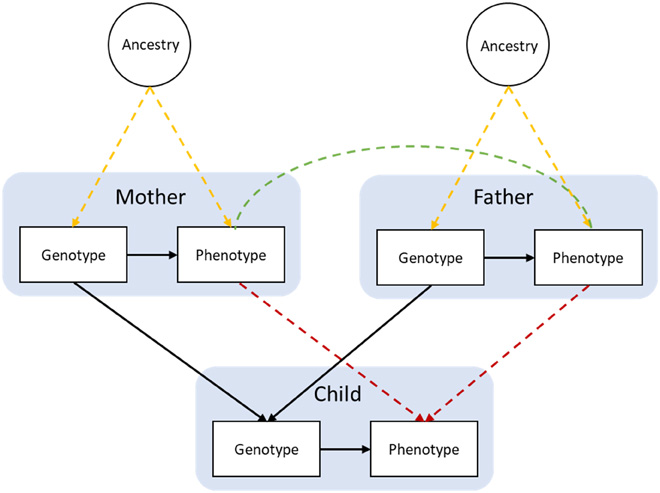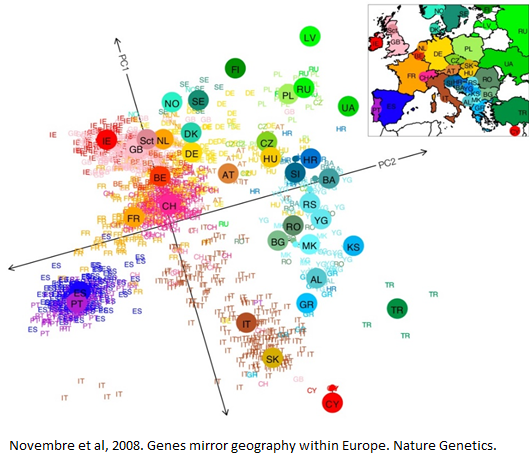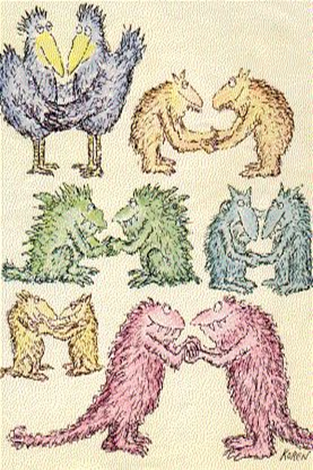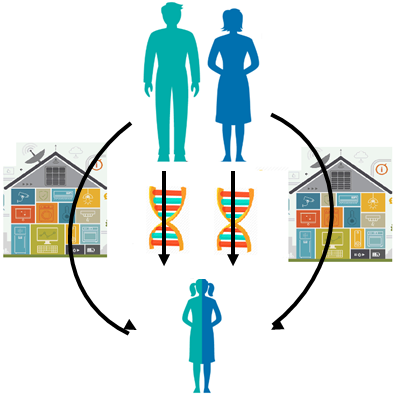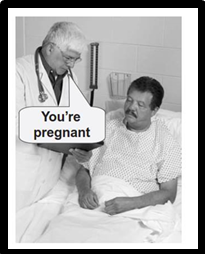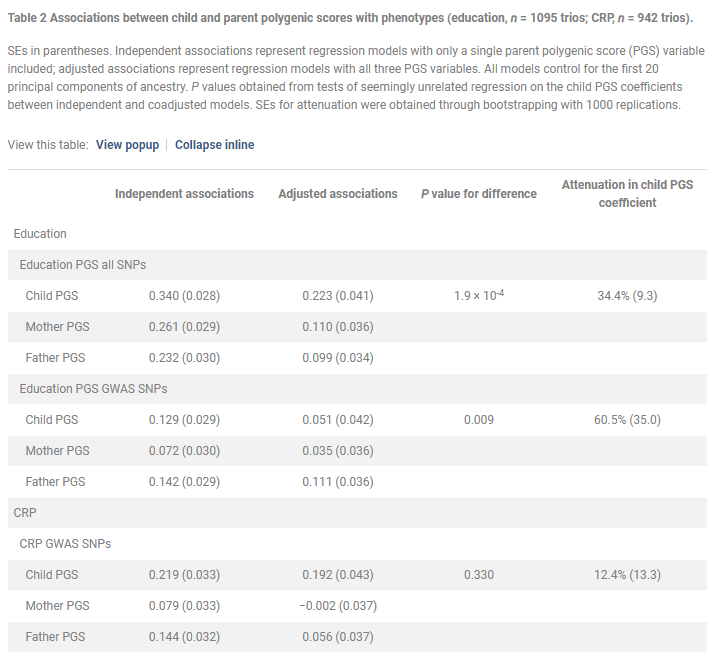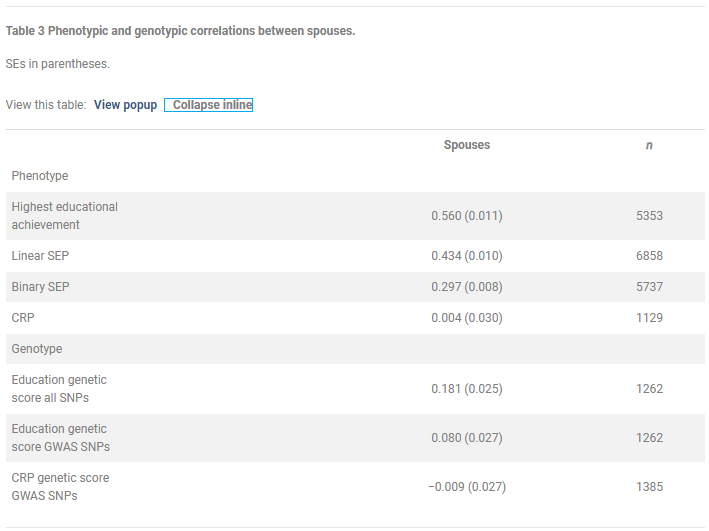In need of some lockdown reading? @nm_davies @explodecomputer @mendel_random and I have a new paper exploring how population level mechanisms may inflate genetic associations and bias conclusions: https://advances.sciencemag.org/content/6/16/eaay0328">https://advances.sciencemag.org/content/6... @mrc_ieu @ScienceAdvances #genetics A thread... 1/23
Genotype > phenotype associations are often implicitly perceived as causal because there can be no reverse causal pathway of phenotype > genotype within an individual. But there are various background population/structural mechanisms that can drive these associations. 2/23
These include population stratification, assortative mating and dynastic (or indirect genetic) effects. Thinking of all individuals as offspring of their parents (duh) can help in understanding how these operate (pop strat=yellow, assortment=green, dynastic=red). 3/23
Pop strat results from structural differences in allele frequencies between sub-populations, which arise due to ancestral non-random mating, drift and spatial isolation. Below plot of 1st & 2nd principle components of ancestry demonstrates this geography within our genes. 4/23
Where traits geographically pattern for social and cultural reasons, spurious genotype-phenotype associations can result. e.g. chopstick use is cultural, but genetic differences btw East Asian and European populations will associate with chopstick use in a combined sample. 5/23
Assortative mating refers to the entirely non-random way that we select our partners based upon certain characteristics including education and height. This phenotypic selection can induce greater genotypic similarity between spouses than in the general population, which... 6/23
results in differences in the offspring generation. Offspring inheritance of genotype is random only conditional upon parent’s genotype, so assortative mating can induce nonrandom inheritance patterns across groups based on phenotype. 7/23
Dynastic effects refer to the way that indirect genetic effects can be picked up in genotype-phenotype associations. Parental genotype can indirectly influence offspring phenotype through its expression in the parental phenotype. A classic example of this is that more... 8/23
educated parents have more books in the household for their children to read; an environmental modification that likely benefits the child’s own educational attainment. 9/23
These 3 population mechanisms can lead to inflated genotype-phenotype estimates within samples of unrelated individuals, particularly for complex, biologically distal or social traits such as education which may be pressured by all 3. This could lead to wrong conclusions. 10/23
Thankfully there are a few family based studies, including the fantastic @CO90s (or ALSPAC to give it its scientific name) which we used for exploring the potential presence of these three mechanisms. 11/23
RESULTS. As best we could tell, bias due to population stratification was low. There are ancestral differences driven by migration in ALSPAC (see https://www.nature.com/articles/s41467-018-08219-1)">https://www.nature.com/articles/... but these don& #39;t appear to be problematic to our analyses. This is also backed up by ongoing work. 12/23
Using polygenic scores for education, we found strong attenuation of offspring scores when controlling for parental scores (34-61% depending on the scores). This is broadly in line with findings from other studies e.g. https://science.sciencemag.org/content/359/6374/424.">https://science.sciencemag.org/content/3... 13/23
To ensure that this attenuation wasn& #39;t due to e.g. genotyping errors, we ran a negative control analysis using C-reactive protein. For this we see no attenuation of offspring scores when controlling for parental scores, so the education attenuation appears to be real. 14/23
This attenuation is supportive of dynastic effects, but it& #39;s important to note that it could also be driven by assortative mating at the parental generation. So, is there a suggestion of assortative mating on education (or related traits) amongst the ALSPAC parents? Well... 15/23
Yes! Spousal phenotypic correlations were 0.56 for education and 0.43 for a linear measure of occupational socioeconomic position! On the negative control of CRP, they were zero. What& #39;s more, there were also spousal non-zero genotypic correlations for education... 16/23
This is useful as it suggests that the phenotypic correlation between parents is a result of assortment rather than convergence (i.e. partners select on education rather than become more similar on it post-partnership formation). 17/23
Brief aside: Laurence Howe is leading some really interesting work here in Bristol on spousal assortment and convergence (eg https://www.nature.com/articles/s41467-019-12424-x,">https://www.nature.com/articles/... https://www.biorxiv.org/content/10.1101/2020.02.17.949347v1)">https://www.biorxiv.org/content/1... 18/23
So what does this all mean? In short, genotype-phenotype associations may not provide unbiased estimates of how g influences p. This is probably a particular problem for complex social traits such as education which are heavily influenced by population level social factors. 19/23
Does it mean that all genetic estimates applied to traits like education are rubbish? No, of course not. As with everything we study, it just means that there are problems that we may not have previously been fully aware of (welcome to science!). 20/23
How can we get around these problems? Family studies! Cohorts with genotyped families (mother-father-offspring trios or sibings) such as @CO90s, MoBa, HUNT, MCS ( @CLScohorts) will allow us to estimate associations that are more robust to these population phenomena. 21/23
For the moment, it& #39;s probably wisest to interpret genetic studies that investigate complex social phenotypes from samples of unrelated individuals with care in light of these mechanisms. Genetic associations may reflect not just genetic, but also social processes. 22/23
Incidentally, if you run a study with genotyped family data (either trios or siblings) and we haven& #39;t spoken to you already, please do get in touch! @nm_davies and I would love to hear from you. 23/23

 Read on Twitter
Read on Twitter